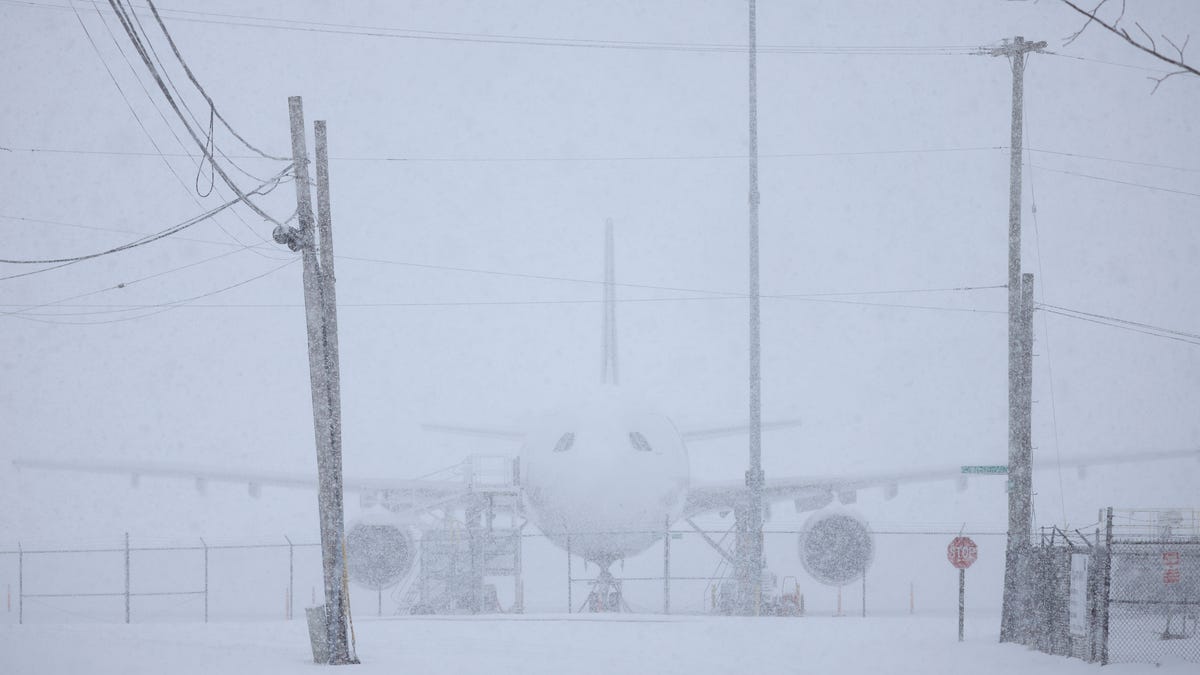Winter Storm Blair: Understanding the Impact on Flight Disruptions Across the U.S.
As Winter Storm Blair sweeps through the Midwest and East Coast, severe weather conditions are creating chaos in air travel, leading to a staggering number of flight cancellations and delays. This winter storm, characterized by heavy snow, ice, and strong winds, has left travelers stranded and airlines scrambling to manage the fallout. In this article, we will delve into how Winter Storm Blair is affecting the aviation industry, travelers, and what it means for the future of air travel in the face of increasingly unpredictable weather patterns.
The Immediate Effects of Winter Storm Blair
Winter Storm Blair has produced a cocktail of severe weather that has forced airlines to rethink their operations. With hazardous conditions on the ground and in the air, major airports across the Midwest and East Coast have seen significant disruption. A few of the immediate effects include:
- Flight Cancellations: Thousands of flights have been cancelled, with major airlines like Delta, American, and United reporting the highest number of disruptions. Airports in Chicago, New York, and Boston are among the hardest hit.
- Delayed Departures: For those flights that are still operating, delays are commonplace as airlines try to manage the backlog of passengers and aircraft.
- Stranded Passengers: Many travelers find themselves stranded at airports, facing long waits and uncertain travel plans. This situation is exacerbated by limited hotel availability in certain cities.
In the first few days of the storm, reports indicated that over 2,000 flights were canceled, with more expected as the storm progresses. The Federal Aviation Administration (FAA) has issued advisories, urging travelers to check their flight status before heading to the airport.
Challenges Faced by Airlines
Airlines are no strangers to weather-related disruptions, but the scale of Winter Storm Blair presents unique challenges. Here are some of the primary difficulties they encounter:
- Logistical Nightmare: Managing the logistics of rebooking passengers and repositioning aircraft becomes increasingly complex as cancellations mount.
- Staffing Issues: With flight crews unable to reach their destinations, airlines face staffing shortages that further complicate operations.
- Financial Implications: The financial fallout from such storms can be significant. Airlines may incur costs related to accommodations, meal vouchers, and operational adjustments, leading to potential losses.
Additionally, the unpredictable nature of winter storms like Blair makes it difficult for airlines to plan ahead. Advanced weather forecasting technology has improved, but sudden changes in storm paths can still catch airlines off guard.
Traveler Experiences During Winter Storm Blair
For travelers caught in Winter Storm Blair’s crosshairs, the experience can be frustrating and exhausting. Here are some common sentiments shared by those affected:
- Frustration with Communication: Many travelers report a lack of clear communication from airlines regarding their flight status, leading to confusion and anxiety.
- Uncertainty and Anxiety: The unpredictability of travel plans can lead to heightened anxiety for passengers, especially those with connecting flights or time-sensitive commitments.
- Community and Resilience: On a brighter note, many travelers have shared stories of camaraderie and support among fellow passengers, helping each other navigate the chaos.
Travelers are encouraged to stay informed through airline apps and websites, as well as social media channels for real-time updates and assistance.
Long-Term Implications for the Aviation Industry
The impact of Winter Storm Blair extends beyond immediate disruptions. As climate change continues to alter weather patterns, the aviation industry must adapt to a future where extreme weather events may become more frequent. Here are some potential long-term implications:
- Investment in Technology: Airlines may need to invest more heavily in advanced weather forecasting and monitoring technologies to better predict and respond to severe weather.
- Infrastructure Improvements: Airports may need to enhance their infrastructure to handle extreme weather, including better snow removal equipment and more robust runway systems.
- Policy and Regulation Changes: Regulatory bodies may need to re-evaluate policies regarding flight cancellations and passenger rights during extreme weather events.
As the industry grapples with these challenges, collaboration between airlines, airports, and weather agencies will be critical in developing effective strategies for managing future storms.
Advice for Travelers During Winter Storms
For those who find themselves traveling during winter storms like Blair, here are some practical tips to navigate the chaos:
- Stay Informed: Regularly check your flight status and stay updated with alerts from your airline.
- Be Flexible: If your plans allow, consider adjusting your travel dates to avoid peak storm impacts.
- Pack Essentials: Always carry essentials like snacks, a charging bank for devices, and a change of clothes in case of unexpected delays.
- Know Your Rights: Familiarize yourself with your rights as a passenger, especially regarding cancellations and delays.
While Winter Storm Blair has certainly caused disruptions, the resilience of both the aviation industry and travelers is commendable. Adaptation and preparation can help mitigate the chaos and ensure that future storms are met with a more robust response.
Conclusion
Winter Storm Blair serves as a stark reminder of the challenges that severe weather poses to the aviation industry and travelers alike. While the immediate effects are daunting, the lessons learned from such events can lead to improved strategies and better preparedness in the future. By understanding the chaos brought on by Winter Storm Blair, we can better appreciate the need for adaptability in an ever-changing climate.
See more Your Daily Weather



